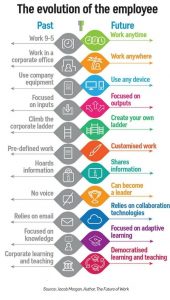Brands need solid data, good deliverability with ISPs and user-friendly email templates to cater to customers more effectively.
“One-to-one marketing” continues to be one of the biggest buzzwords of 2019. At MarTech West last month, it felt like everyone at the conference discussed how their teams are working to foster personalized connections with customers through technology stacks. It also was refreshing to hear that I’m not alone and no one has achieved truly one-to-one marketing – at least not yet.
Customer-centric brands constantly adapt and improve processes to cater to its customers more effectively. Here are five steps such brands take to get closer to one-to-one personalization.
Spotless data
It doesn’t matter how engaging your content is if you’re not making it into subscribers’ inboxes. To ensure you’re maximizing the potential of all its email campaigns, practice good data hygiene. This involves removing inactive subscribers, fake accounts and duplicate email addresses regularly. I’ve seen these practices allow retailers to see a 60% lower average bounce rate during the busy holiday season which translates to more conversions.
Good deliverability reputation with ISPs
It’s imperative that brands follow email best practices to establish and maintain a good relationship with internet service providers like Gmail, Yahoo and others. A poor reputation with any of the ISPs puts a barrier between your brand’s emails and their subscribers’ inboxes, which translates into lower conversions and revenue.
That’s why it is essential to monitor your reputation. We’re continually reviewing and adjusting targeting, frequency and deployment strategies to stay best friends with the ISPs. Last year alone these changes resulted in a 100% inboxing rate, an 18% increase in the average open rate and a 48% reduction in the average bounce rate with Gmail for one retailer I spoke with. These improvements were hugely impactful considering that Gmail continues to gain market share of subscribers. Not only did these changes isolate the less engaged audience, but it also reduced the bolstered engagement metrics for that segment.
User-friendly email templates
We marketers know that effective emails use responsive design and offer dynamic content, yet the biggest reason not all emails leverage these capabilities is the significant amount of resources required to create them. From idea generation to deployment, creating a new email campaign can take two weeks or more if marketers don’t have a streamlined process and the right tools in place. That’s why having a tool to easily customize content without involving a developer for coding support makes a significant impact in email.
With such tools, marketing teams can build responsive, dynamic campaigns without coding by using drag-and-drop functionality. In effect, you’ll see production time cut in half, which allows your team to create more relevant content for more of your audience.
Dynamic content blocks
Dynamic content blocks cater to each subscriber segment, and enabling more of these for offers or smaller items like the preheader can create greater efficiencies. In retail, there are a lot of constantly moving pieces from inventory to offers that can change at a moment’s notice. Building automated pieces of content within your templates ensures when these last-minute changes come, the creative teams don’t have to lift a finger. This dramatically reduces production and enables the creative teams to focus their time on the real design work.
The power of email triggers
A robust trigger program is the easiest way to implement personalization for email programs. The payoff is the delivery of relevant content in a timely manner that results in open rates that far exceed the average promotional message – over 100% greater. Look at your data to figure out unique ways subscribers’ activity, purchase history, browser behavior, preference data or interests can boost your program. These triggers provide a huge jump in revenue with much less maintenance in content creation and they provided an added benefit of a testing lab for creative ideas.
As marketers, we know that the best way to communicate with customers, build awareness and ultimately drive revenue is to offer individualized content. We know we need to send them the right content at the right time. While this is achievable for small companies with only a few loyal customers, scaling that level of individualized communication to a larger audience or customer base is currently impossible. But we’re getting closer every day, and by following the steps laid out here, marketers may be able to achieve true one-to-one personalization sooner than we think.
Opinions expressed in this article are those of the guest author and not necessarily Marketing Land. Staff authors are listed here.
Marketing Land – Internet Marketing News, Strategies & Tips
(16)





